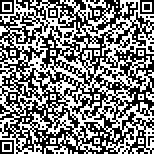下载中心
优秀审稿专家
优秀论文
相关链接
摘要

文中分析了水体及其它主要的地物的光谱特征在SPOT曩像中的表征特征,发现大多数地形阴影与水体的光谱特征具有一定的相似性,因而用单一的方法很难有效地提取山区的水体,经过研究,发现用决策树分类方法,在各节点设计不同的分类器,可以有效地提取山区中的水体,由于不同类型的水体其面积,周长,形状等几何特征各有特点,并且与地貌类型有一定的关系,因而可利用水体的空间特征信息,对提取的水体进行分类,其方法也选用决策树分类方法,分类结果令人满意。
The remote sensing mechanism and spectral characteristics of water bodies and other objects in SPOT 4 imagery were analyzed. Due to the similar infrared spectral response feature of water bodies to those of the objects under the mountain shadows in the imagery, thresholding for infrared bands is not suitable for the extraction of water bodies. The decision tree algorithm including several classifiers was put forward, which can extract water bodies effectively and easily. The terrain information and geometric features such as perimeter, area, and shape, which are frequently used in visual interpretation, can be used to classify water bodies into subclass. The decision tree algorithm including several classifiers associated with terrain and geometric information was developed to classify water bodies. Jiangning county of Jiangsu Province was selected as a case study area, SPOT 4 (XI, 1999.1) and contour data of the area were used as information sources, the results after applying the proposed approach were satisfactong.

